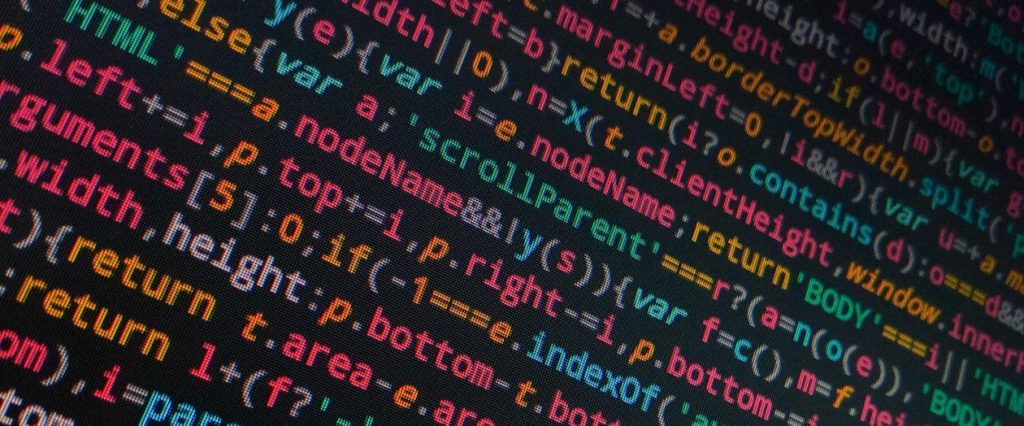Understanding the essence of data integrity in automation testing
Data integrity in automation testing is a cornerstone for achieving reliable and accurate test outcomes. The essence of maintaining this integrity lies in a comprehensive understanding of data validation, continuous monitoring, and proactive mitigation of risks associated with data handling in automated tests. This guide delves deep into the realms of data integrity, providing a structured pathway to ensure the quality and reliability of automation testing endeavors. Insights include:
- Definition and importance of data integrity in the landscape of automation testing.
- Exploration of potential risks and threats to data integrity during automation tests.
- Detailed insights into effective data validation strategies ensuring accuracy and consistency of test data.
- Integration of data integrity checks within test automation frameworks for continuous validation.
- Significance of regular data backups and efficient recovery strategies in maintaining data integrity.
- The role of continuous monitoring and auditing in assuring data integrity throughout the testing process.
- Insightful discussion on common challenges and effective solutions in maintaining data integrity in automation tests.

Table of Contents
Table of Contents
About data integrity
Data integrity is the cornerstone of reliability and accuracy in automation testing. It encompasses the maintenance and assurance of the accuracy and consistency of data over its entire lifecycle. In the realm of automation testing, ensuring data integrity translates to guaranteeing the quality and credibility of testing processes.
Definition and importance of data integrity in automation testing
Data integrity refers to the accuracy, consistency, and reliability of data during various processes like storage, retrieval, and processing. In automation testing, the data used for testing needs to remain accurate and consistent to ensure that the tests are reliable and the results are valid. The importance of data integrity in automation testing cannot be overstated as it directly impacts the confidence in testing outcomes and, by extension, the software quality.
How maintaining data integrity correlates with the quality of testing
The correlation between data integrity and the quality of testing is quite direct. Accurate and consistent data ensure that tests run in a reliable manner, providing valid results that reflect the true state of the software under test. If data integrity is compromised, the tests might produce false positives or negatives, leading to incorrect conclusions about the software’s quality and reliability. Maintaining data integrity is a foundational element in building trust in automation testing processes and ensuring that the software meets the requisite quality standards.
Identifying threats to data integrity in automation tests
A wide range of factors can pose threats to data integrity during automation testing. It’s crucial to identify and understand these threats to devise effective strategies to mitigate them, ensuring the reliability of the test data and, consequently, the test results.
Exploration of potential risks and threats to data integrity during tests
Several potential risks and threats can jeopardize data integrity during automation tests. These include data corruption due to software bugs, unauthorized data access or alterations, network issues, and hardware failures. Additionally, inadequate validation and improper handling of data can also pose significant risks. Understanding these threats is the first step towards devising strategies to ensure data integrity.
The implications of compromised data integrity on test outcomes
Compromised data integrity can have severe implications on test outcomes. Incorrect or inconsistent data can lead to invalid test results, misrepresenting the actual state of the software under test. This could result in undetected bugs, leading to inferior software quality, potential financial loss, and reputational damage. Ensuring data integrity is, therefore, paramount to avoid misleading test results and ensure the credibility of the testing process.
This expansion delves deeper into the essence and importance of data integrity in automation testing, exploring the potential threats and their implications. By understanding the correlation between data integrity and testing quality, and identifying the risks, one can better appreciate the foundational role of data integrity in ensuring reliable and accurate automation testing.
Implementing proper data validation techniques
Effective data validation is a linchpin in maintaining data integrity, especially in the domain of automation testing. Data validation encompasses a spectrum of checks and techniques aimed at ensuring the accuracy and quality of data throughout the testing process. It’s a proactive approach to identify and rectify discrepancies in data that could potentially skew the test results adversely.
Detailed insights into effective data validation strategies in Automation Testing
A thorough approach to data validation within automation testing entails a variety of strategies, each tailored to address specific aspects of data integrity. Some of these strategies include:
- Field-level validation: Ensuring that individual fields contain valid data by checking data type, size, and other inherent characteristics.
- Form-level validation: Checking the validity and completeness of data across a group of related fields.
- Cross-field validation: Validating the relationships and dependencies between different data fields.
- Database validation: Ensuring that the data stored in databases is correct and consistent.
- Business rule validation: Validating that the data conforms to the requisite business rules and logic.
Employing a combination of these strategies ensures a holistic approach to data validation, significantly reducing the likelihood of data corruption or errors that could undermine the integrity of the testing process.
The role of data validation in preventing data corruption and errors
Data validation serves as a bulwark against data corruption and errors, two of the primary adversaries of data integrity. By employing rigorous data validation techniques, testers can identify and rectify data issues at an early stage, preventing the propagation of errors through the testing process. This early detection allows for corrective measures to be taken before further processing, thereby ensuring the accuracy and consistency of data used in automation tests.
Data validation not only helps in preventing data corruption but also fosters a culture of quality assurance within the testing process. By ensuring that the data used in testing is accurate, consistent, and reliable, data validation contributes immensely to the overall effectiveness and reliability of automation testing. Through diligent data validation, testers can significantly mitigate risks associated with data corruption and errors, thereby safeguarding the integrity of the testing process and the quality of the software under test.
Continuous monitoring and auditing for data integrity assurance
The landscape of automation testing is ever-evolving, with data being at the core of all operations. Ensuring data integrity amidst this dynamism necessitates a continuous vigilance, achieved through continuous monitoring and auditing. These processes are indispensable for identifying and rectifying issues that could potentially compromise data integrity, in a real-time or near real-time manner.
The essence of continuous monitoring in data integrity assurance
Continuous monitoring is a proactive approach to safeguard data integrity. It entails a perpetual surveillance of the data and the systems handling it, to detect and address anomalies promptly. This constant vigil helps in early identification of potential threats to data integrity, thus allowing for timely intervention. The key facets of continuous monitoring include real-time data validation, tracking data interactions, and automated alerts for anomaly detection.
- Real-time data validation: Employ real-time validation techniques to ensure data correctness and consistency continuously.
- Tracking data interactions: Monitor the interactions with data to identify any unauthorized access or modifications.
- Automated alerts: Set up automated alerting mechanisms to get notified about potential threats to data integrity instantly.
Augmenting data integrity assurance through auditing
Auditing complements continuous monitoring by providing a historical record of data interactions, which is invaluable for troubleshooting and ensuring compliance with data integrity standards. Auditing involves the systematic review of data access logs, modifications, and adherence to data handling protocols. It provides insights into the data handling practices and helps in identifying areas of improvement to bolster data integrity assurance.
- Regular auditing schedules: Establish a regular auditing schedule to review data interactions and ensure compliance with data integrity standards.
- Log reviews: Conduct thorough reviews of data access and modification logs to identify any unauthorized or suspicious activities.
- Compliance checks: Ensure adherence to data handling protocols and compliance with data integrity standards through systematic audits.
Overcoming challenges in maintaining data integrity in tests
The quest for maintaining data integrity in automation tests is laden with challenges, emanating from the dynamic nature of testing environments and the inherent risks associated with data handling. However, these challenges are not insurmountable. With a blend of effective validation techniques, robust data backup and recovery strategies, and a proactive approach towards monitoring and auditing, it is feasible to uphold data integrity, thereby ensuring the quality and reliability of automation tests.
Insight into common challenges and effective solutions in maintaining data integrity
The challenges in maintaining data integrity are multifaceted, ranging from data corruption, unauthorized access, to inadvertent modifications. Employing effective validation techniques and integrating data integrity checks in automation frameworks are pivotal steps towards overcoming these challenges. Moreover, robust data backup and recovery strategies ensure a safety net against data loss or corruption.
- Data corruption: Employ validation checks to detect and rectify data corruption.
- Unauthorized access: Implement robust access control mechanisms to prevent unauthorized data access.
- Inadvertent modifications: Utilize automated checks to detect unintended data modifications and take corrective measures.
Proactive measures to mitigate risks to data integrity in automation tests
Adopting a proactive stance is quintessential for mitigating risks to data integrity. Continuous monitoring and auditing, coupled with staying abreast of the latest best practices in data integrity maintenance, are proactive measures that go a long way in ensuring the quality and reliability of automation tests. By embracing these measures, it is possible to foster a testing environment that is conducive to upholding the highest standards of quality and reliability.
- Engagement in continuous learning: Engage in continuous learning to stay updated with the latest best practices in data integrity maintenance.
- Community participation: Participate in relevant communities to learn from the experiences of other professionals in the domain.
- Regular reviews and updates: Conduct regular reviews of the data integrity measures in place and update them as necessary to cater to the evolving testing environment.
FAQs: Securing Data Integrity in Tests: Pro Strategies for Quality Assurance in Automation
Ensuring Data Integrity is vital as it guarantees the accuracy, consistency, and reliability of data during the entire testing process. This is crucial in Automation Testing to validate the correctness of the application's functionality, to avoid false positives/negatives, and to ensure that the test results are reliable and based on accurate data, leading to high-quality software products.
Challenges often include handling of incomplete or incorrect data, managing synchronization issues, dealing with concurrent data access, and mitigating risks of data corruption. Also, ensuring data security, managing data dependencies, and handling large volumes of test data efficiently are significant challenges that need meticulous attention.
Implementing stringent data validation checks, utilizing checksums and hashes to verify data integrity, conducting thorough data sanitization and cleansing, and maintaining proper data synchronization are pivotal strategies. Additionally, leveraging data mocking and stubbing, ensuring secure data storage and transfer, and performing regular data integrity audits can further secure Data Integrity in Automation Tests.
Maintaining Data Integrity ensures the reliability and accuracy of test results, leading to more precise insights into the software's functionality and performance. This enables the identification and rectification of defects more accurately, ensuring the delivery of a high-quality software product that meets the intended requirements and provides a seamless user experience.
Yes, Data Integrity issues can indeed lead to security vulnerabilities by allowing inaccurate or corrupted data to pass through the testing phases, which can result in undetected flaws or weaknesses in the software, making it susceptible to security breaches, data leaks, and unauthorized access, and compromising the security of the software and its users.
Adopting stringent data validation and verification protocols, maintaining secure and encrypted data storage and transfers, implementing robust error handling and recovery procedures, and utilizing reliable and consistent data sources are essential best practices. Regular data backups, thorough documentation of data handling processes, and continuous monitoring for any discrepancies also play a crucial role.
A well-structured Automation Testing Framework plays a pivotal role in ensuring Data Integrity by providing a standardized environment, clear guidelines, and robust tools for handling and managing test data effectively. It facilitates the implementation of best practices for data validation, synchronization, security, and error handling, ensuring the accuracy and reliability of test results, and ultimately enhancing the quality of the software product.



